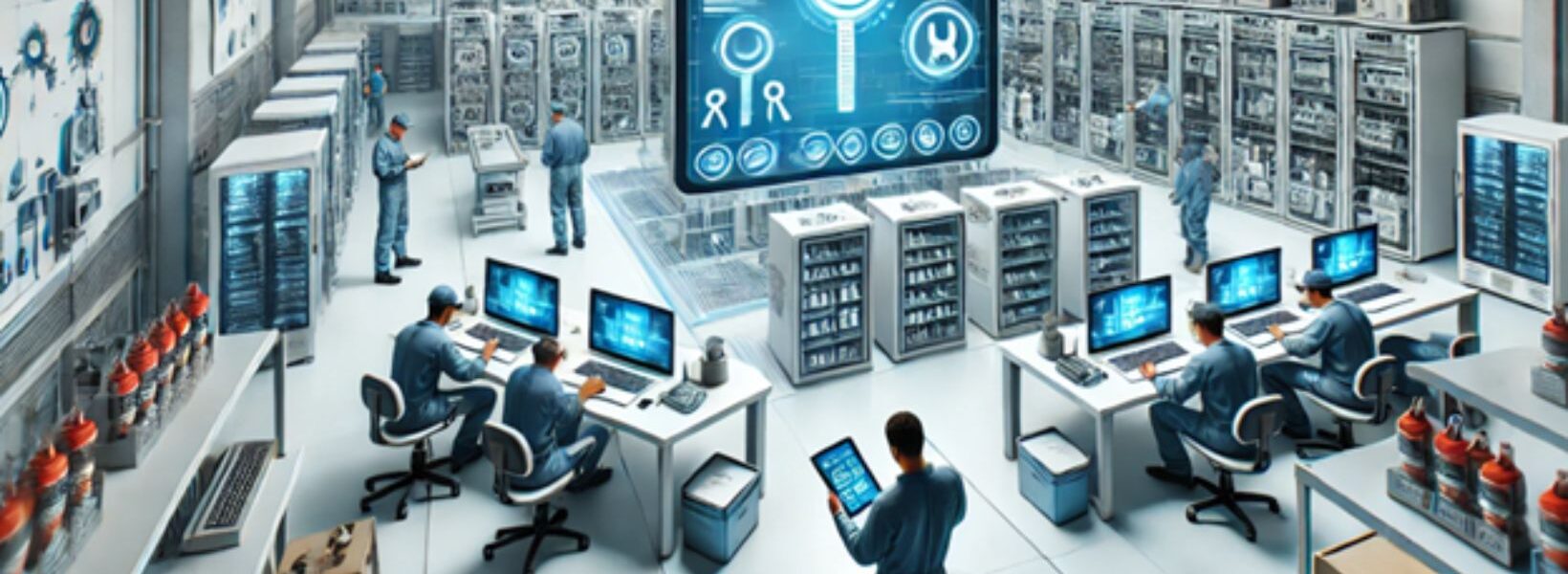Enhancing Building Maintenance with Facility Management Software: Key Features and Benefits
In today’s complex business environment, efficient building maintenance is crucial for organizations to ensure smooth operations, maintain asset value, and provide a safe and comfortable environment for occupants. As buildings become more sophisticated and regulations more stringent, particularly in regulated industries, the need for advanced tools to manage facilities has never been greater. This is where Facility Management software comes into play, offering a comprehensive solution to streamline maintenance processes, improve efficiency, and ensure compliance.
The Evolution of Building Maintenance
Traditionally, building maintenance relied heavily on manual processes, paper-based systems, and disconnected digital tools. This approach often led to inefficiencies, delayed responses to maintenance issues, and difficulties in tracking and reporting. Facility Management software has emerged as a game-changer, providing a centralized platform that integrates various aspects of building maintenance and management into a single, cohesive system.
Key Features of Facility Management Software
1. Asset Tracking and Management
At the core of any effective Facility Management software is robust asset tracking and management capabilities. This feature allows organizations to:
– Maintain a comprehensive inventory of all building assets
– Track the lifecycle of each asset, from acquisition to disposal
– Monitor asset performance and maintenance history
– Schedule preventive maintenance based on usage or time intervals
By having a clear overview of all assets, facility managers can make informed decisions about maintenance priorities, budget allocation, and asset replacement strategies.
2. Work Order Management
Efficient work order management is crucial for the timely resolution of maintenance issues. Facility Management software typically includes:
– User-friendly interfaces for submitting maintenance requests
– Automated work order assignment based on priority and technician availability
– Real-time tracking of work order status
– Mobile access for technicians to update work orders on-the-go
This streamlined process ensures that maintenance tasks are addressed promptly, reducing downtime and improving occupant satisfaction.
3. Preventive Maintenance Scheduling
One of the most valuable aspects of Facility Management software is its ability to facilitate proactive maintenance strategies. Key features include:
– Automated scheduling of routine maintenance tasks
– Reminders for upcoming maintenance activities
– Integration with asset performance data to trigger condition-based maintenance
By shifting from reactive to preventive maintenance, organizations can extend asset lifespan, reduce unexpected breakdowns, and optimize maintenance costs.
4. Space Management
Effective space utilization is crucial for maximizing building efficiency. Facility Management Software often includes:

– Visual floor plans and space allocation tools
– Occupancy tracking and analysis
– Booking systems for shared spaces
– Reporting on space utilization metrics
These features help organizations optimize their space usage, potentially reducing real estate costs and improving workplace efficiency.
5. Energy Management
With a growing emphasis on sustainability and cost reduction, energy management has become a critical component of facility management. Advanced software solutions offer:
– Real-time monitoring of energy consumption
– Integration with building automation systems
– Analytics to identify energy-saving opportunities
– Reporting tools for sustainability initiatives
By leveraging these features, organizations can reduce their energy costs and carbon footprint, aligning with both financial and environmental goals.
6. Compliance and Reporting
For organizations in regulated industries, ensuring compliance with various standards and regulations is paramount. Facility Management software aids in this by providing the following:
– Automated tracking of compliance-related tasks and inspections
– Digital storage of compliance documentation
– Custom reporting tools for regulatory submissions
– Audit trail capabilities for all maintenance activities
These features not only help ensure regulatory compliance but also streamline the often complex and time-consuming reporting processes.
Benefits of Implementing Facility Management Software
1. Improved Operational Efficiency
By centralizing all facility-related information and automating many routine tasks, Facility Management software significantly enhances operational efficiency. This leads to faster response times, reduced downtime, and more effective utilization of maintenance resources.
2. Cost Reduction
Through better asset management, preventive maintenance, and energy optimization, organizations can achieve substantial cost savings. The software’s analytical capabilities also help identify areas for further cost reduction and process improvement. For expert support in achieving cost reduction through optimized energy solutions, Utility Bidder provides tailored services to help businesses save more effectively.
3. Enhanced Decision Making
With access to comprehensive data and analytics, facility managers can make more informed decisions about maintenance priorities, capital investments, and resource allocation.
4. Increased Asset Lifespan
Proactive maintenance strategies enabled by the software help extend the useful life of building assets, delaying the need for costly replacements and maximizing return on investment.
5. Improved Occupant Satisfaction
Faster resolution of maintenance issues and better-maintained facilities contribute to higher levels of occupant comfort and satisfaction, which is crucial for both employee productivity and tenant retention in commercial properties.
6. Streamlined Compliance
For regulated industries, the compliance features of Facility Management software can significantly reduce the time and effort required to maintain regulatory adherence, minimizing the risk of non-compliance penalties.
Implementing Facility Management Software: Ideal Practices
While the benefits of Facility Management software are clear, successful implementation requires careful planning and execution. Here are some best practices to consider:

1. Define Clear Objectives: Clearly outline what you hope to achieve with the software implementation, whether it’s reducing maintenance costs, improving compliance, or enhancing occupant satisfaction.
2. Ensure Stakeholder Buy-in: Involve key stakeholders, including facility managers, maintenance staff, and end-users, in the selection and implementation process.
3. Data Migration and Integration: Plan carefully for migrating existing asset and maintenance data into the new system. Consider how the software will integrate with other business systems like ERP or HR software.
4. Customization and Scalability: Choose a solution that can be tailored to your specific industry needs and can scale as your organization grows.
5. Training and Support: Invest in comprehensive training for all users of the system. Ongoing support is crucial for addressing issues and maximizing the value of your investment.
6. Phased Implementation: Consider implementing the software in phases, starting with core functionalities and gradually expanding to more advanced features.
Industry Leaders Driving Innovation
As the demand for sophisticated Facility Management solutions grows, industry leaders are stepping up to meet the challenge. Companies like CERDAAC are at the forefront, offering advanced solutions tailored for regulated industries. Their systems go beyond basic maintenance management, incorporating features specifically designed to enhance productivity, reduce downtime, ensure compliance, and drive cost efficiency.
In an era where operational efficiency, cost reduction, and regulatory compliance are paramount, Facility Management software has emerged as a critical tool for success. By streamlining maintenance processes, optimizing asset management, and providing powerful analytics and reporting capabilities, these software solutions empower organizations to manage their facilities more effectively than ever before.
As technology continues to evolve, we can expect Facility Management software to become even more sophisticated, potentially incorporating artificial intelligence and machine learning to offer predictive maintenance capabilities and even more advanced analytics. For businesses across all sectors, but particularly those in regulated industries, embracing these advanced Facility Management solutions is not just about staying current—it’s about positioning themselves at the forefront of building maintenance and management innovation.





